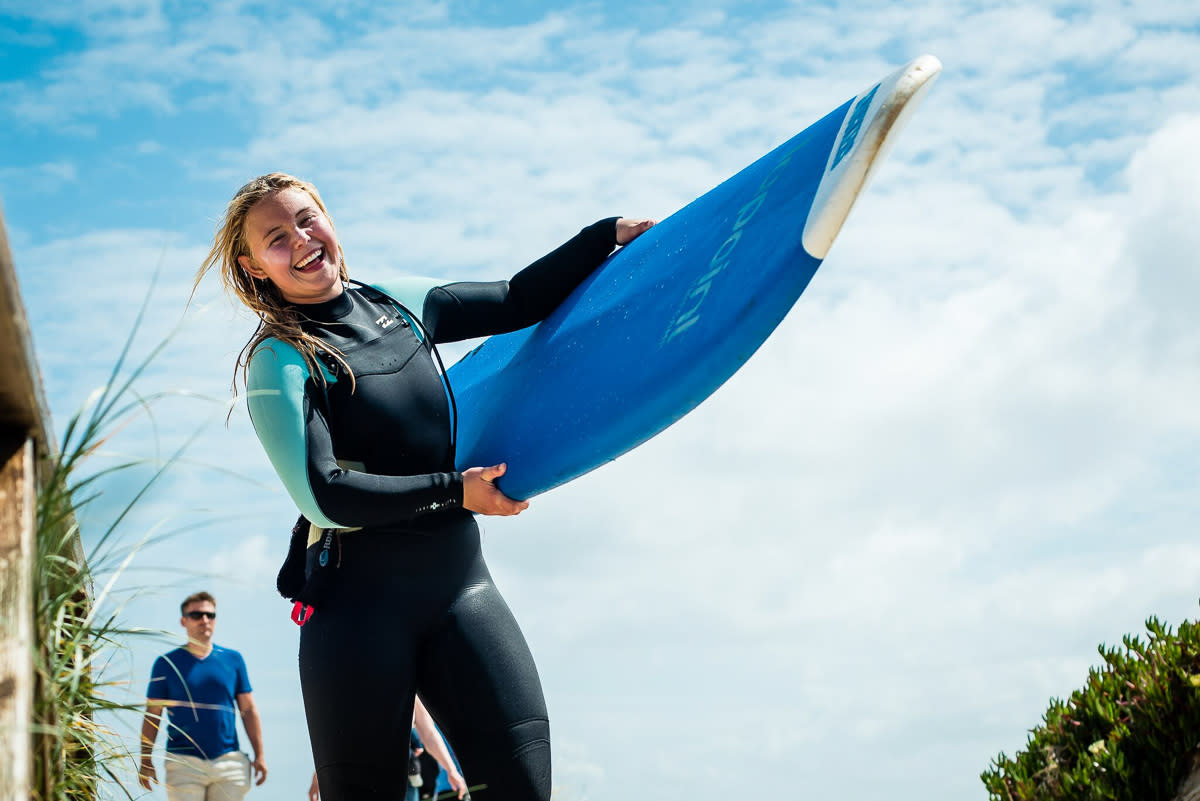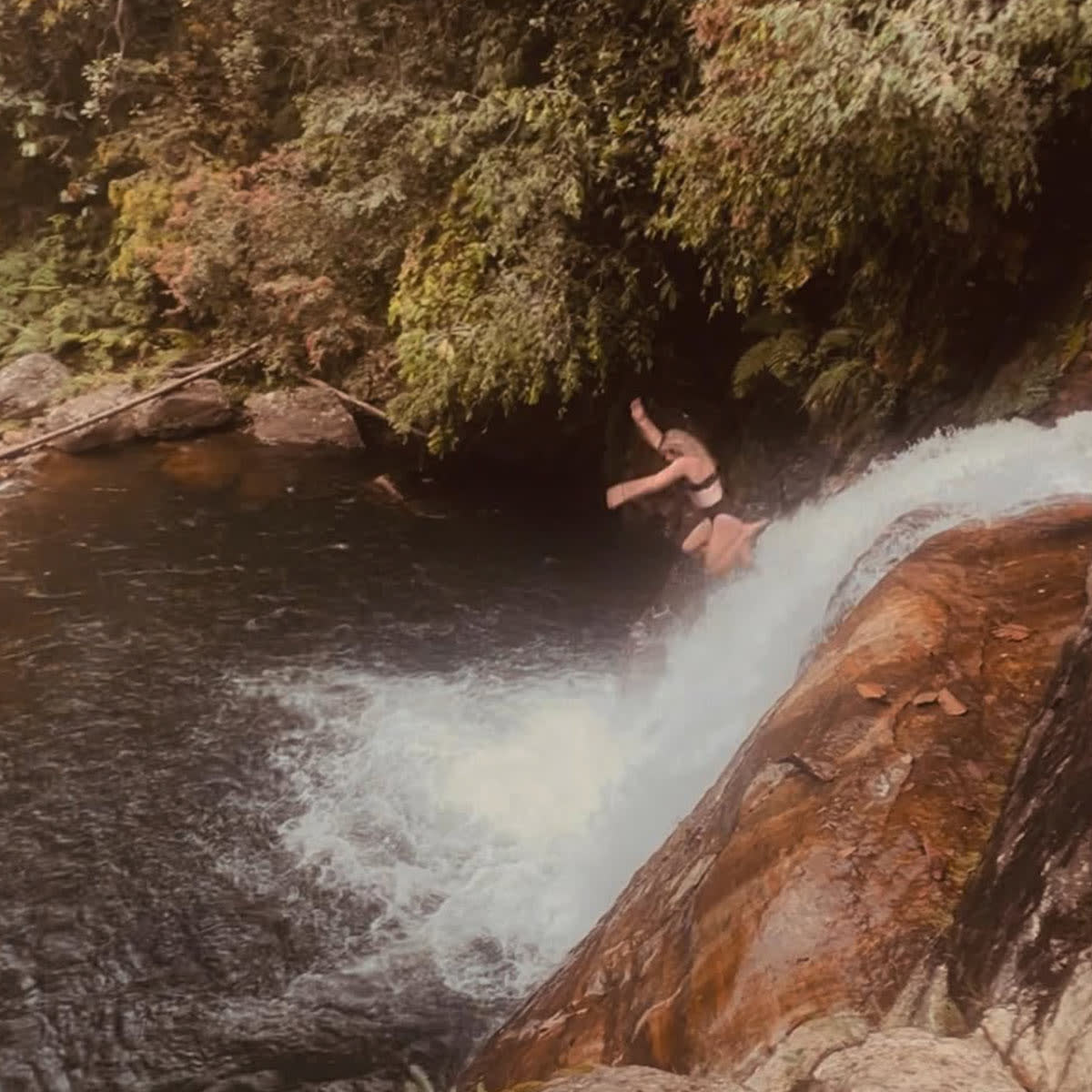
The science of surf — how surfboards are made
June 30, 2025Have you ever wondered just how the boards in your quiver were made? There is a whole science behind surfboards and the process of making them, as we find out from three skilful board makers based in Portugal’s surfing capital. Let's dive down and have a look at the steps in making a surfboard!
Few things can top the feeling of catching waves on a sunny day with your friends. But what most people don't realize is just what goes into the process of creating that perfect board.
In short, the surfboard is based on a piece of foam that must be shaped, then coated with fibreglass and resin, and then get sanded. Then all that remains are the fins, leash plug and applying a topcoat and polishing it. Voila, your new board is ready for the waves!
How surfboards are made: step by step
Surfboards can be made in a factory within minutes or crafted over a period of hours, or even days, by a skilled shaper. Either way, the making of a board is a beautiful fusion of art and science.
“When you are in the shaping room you see all the little details on the board. I don't think people realize just how much that goes into the process,” says Sergio Martins Nunes, the founder of Surfing Room, a local surfboard making business in Ericeira.
“When you make different boards everything changes and yet everything stays the same. We use the same process, but we adapt it for the conditions of the board that the customer wants,” adds Rodrigo Neves, the owner of Kauai Surfboards.
The process of making a surfboard can look very different depending on many factors, such as the kind of board that is being made, what the client wants and the skillset of the board maker. While the process can be undertaken by a single surfboard builder, it is more often divided between different craftspeople, including shapers, painters, glassers and sanders.
Starting from the core
Let's assume that the customer knows what kind of board they want. Then the technical part starts!
The board will either be made completely from scratch or by carving out the board from a surfboard blank, a large piece of foam that works as the core of the board. Inside is a piece of wood called a stringer, glued between two foam blocks, which provides flex and strength.
Now we’re getting to the complicated part. It is time to choose the material for the core. There are four main types of foam blanks that are used today:
Polyurethane (PU)
Polystyrene (PS)
Expanded Polystyrene (EPS)
Extruded Polystyrene Foam (XTR or XPS)
Each has its pros and cons and varies in flexibility and density, which makes them perform differently when being surfed on in the waves.
The traditional surfboard has a polyurethane (PU) foam core and is coated with fibreglass and polyester resin. The polyurethane (PU) board has ruled the market as the most popular foam option for a long time, but EPS, which gained popularity in the late 90s, is also commonly used. The new generation boards are made with polystyrene (PS or EPS) foam and are coated with fibreglass and epoxy resin. The polystyrene core boards are lighter, less resistant and more environmentally friendly than the PU boards.
By the way, there are also more unusual materials that can make the core of a board, like recycled plastic or cork. But you usually wouldn't see these boards in a surf shop.
What are epoxy and polyester?
When talking about different boards you can identify them by the foams, like PU or EPS or by the different resins, such as epoxy and polyester.
Shaping, glassing and sanding
Now we know some basics about surfboard materials, let’s go into a bit more detail about board shaping. First, the board is carved out of the blank, either by hand or by machine. Then the shaper will shape the board into the desired form.
Nico Carvalho is the founder of Wavegliders, a company in Ericeira that makes handmade surfboards. He says that while every step is important, it’s the shaping of the board that really makes the difference when you’re riding the wave.
“If you change the shape, you get a different function. It is about hydrodynamics (like aerodynamics, but in water).”
Once the board is shaped, a glasser will laminate the board, a process that is called glassing. This is necessary to make the board hard and surfable. Without good glassing, the board would get destroyed in no time in the ocean. This is where the board will be covered by a fibreglass coat, and a resin will be poured over it. Then the sander will sand the board and the board will go through steps of coating, wet sanding and polishing.
Depending on the process of the makers, the board gets painted after the customer's request and fins and a leash plug will be added.
What makes a foamy surfboard?

A beginner surfboard is known as a soft-top surfboard or a “foamie”. These boards are easy to use, from paddling to catching your very first waves. You don't have to worry about dings either, since these boards can take a hit. Foamies are made in different ways depending on the price range.
The more expensive foamies have a similar construction to a hardboard on the inside and are then covered with soft materials.
Things to consider when you buy a surfboard
When you buy a custom board, one of the most important aspects to consider is your level of surfing. With the right board, you will have the time of your life in the waves, but if you choose a board that’s too advanced for you it will leave you feeling defeated on your way back to the beach.
“Never start with a board that the pros are riding. I always try to tell the person who buys their first board to buy a big one that will be the fast lane for fast evolution. A bigger board will allow you to catch smaller waves, white water waves and that's how you learn how to surf. Then it is a process of downsizing the length of your board. Don't be embarrassed by having a bigger board. If you are being honest with yourself and your shaper, you will get help to progress fast,” says Carvalho.
“It is important to support the local shapers, they know more than all the big productions in the shops,” adds Martins Nunes.
If you are unsure about your level, talk with your surf coach and ask what board they think you might need. Lídia Carvalho Pinto is a local surfer and surf coach in Ericeira. When she is buying a new surfboard she considers her physical measurements and the size of waves she wants to surf.
“My best advice is: try out as many surfboards as you can, and from that build a solid knowledge about the surf equipment. Then you pick the surfboard that provides you with the most fun!” she says.
Now surf your heart out
Surfing is so much more than just a sport for so many people. For some, it’s cultural and spiritual. For some, it's about seeking the adrenaline high of riding big waves, and for others, surfing is a form of relaxation. The sport is based on a community and the process of making a board ties a band between the shaper, the surfer and the new board. Now that we know how the boards are made, it's time to make some waves!
NEWSLETTER
Stay up to date, sign up for our newsletter

Beatrice Lindfors
About the author: My name is Beatrice, but Bea for short, and I’ve been a writer and content creator for Lapoint since 2022. My life revolves around my laptop and backpack as I travel the world (always with a stop in Ericeira; the camp vibe there and the Portuguese sunset have my heart). Life goal? Visit every country.
Obsession? The Sri Lanka waves, the Atlantic Ocean and tracking down the best coffee –whichever my current location is.

